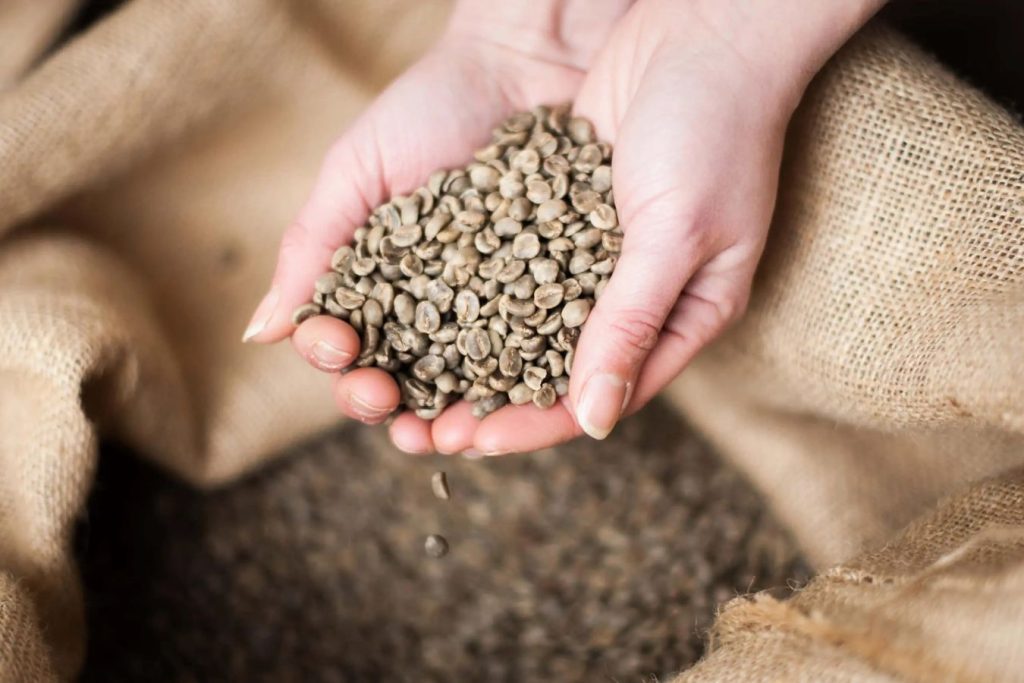If you don’t adequately preserve Arabica coffee beans, it will significantly impact the quality and price of coffee beans when you go to market.
Factors Affecting The Coffee Preservation Process: Quality
- Coffee bean humidity and the surrounding environment
- The temperature of the coffee block and the surrounding environment
- In the coffee shop, there is air circulation.
Method For Storing Coffee Beans That Is Commonly Used Coffee
Store in a dry environment:
- Bask
- Using hot air to dry
- Use water-absorbent compounds like H2SO4, CaCl2, and so on…
- Store in an active ventilation environment:
The dynamic ventilation storage method works by taking advantage of the void in the green coffee bean block and repeatedly fanning dry and cool air into it to lower the temperature and humidity of the bean block.
The air that is blown into the particle block must match the following requirements:
- The air must be fanned evenly throughout the grain bulk.
- A sufficient amount of dry and cool air should be provided to lower the grain mass’s temperature and humidity.
- Only fan when the outdoor air humidity is low; otherwise, the moisture content of the seed mass must be lowered after the fan.
- The temperature of the granules must be lower than that of the ambient air.
Low-temperature storage:
Coffee beans, bacteria, insects, and other biological creatures have limited activities at low temperatures. The procedure is blowing cold and dry air into a heap of coffee beans.
Cold air is kept in the bean mass for an extended period due to the coffee beans’ poor thermal conductivity, restricting their life activities and allowing them to be preserved for a long time.
Because of the weather in our country, we cannot use this strategy too often, but we can take advantage of some cold and dry winter days.
Storage in a sealed container:
Closed storage, often known as the lack or absence of oxygen, is a type of storage in which no oxygen is present. When there is a shortage of oxygen, the respiratory processes of living things nearly stop, and aerobic respiration takes over.
The living activities of microorganisms are halted because insects are destroyed in the bulk of coffee beans, which contain primarily aerobic bacteria—reducing O2 gas by being able to add CO2 to the bean mass, as well as O2 loss owing to the respiration of living components in the coffee bean mass.
Because green coffee’s physical and physiological features differ from parchment coffee, the unfavorable process happens faster in green coffee preservation, and the preservation durability is lower than parchment coffee due to the husk.
Because the protective silk layer has been peeled away and the coffee beans are in direct touch with the environment, coffee requires a more stringent preservation and quality control regime than parchment coffee. The following protection methods are currently in use.
Bags for preservation: (sacks, cloth bags…) This is a widely used and widely used approach. Keep the following considerations in mind when storing:
The humidity of green coffee being stored must be less than 13%.
Impurities in coffee are kept to a minimum; for coffee grades I and II, the impurity percentage is less than 0.5 percent.
Select a humidified warehouse with adequate insulation and humidity.
Before packaging, the warehouse must be disinfected and cleaned.
Stacking on the ground and close to the wall is not recommended: 0.3 m away, 0.5 m away from the wall.
Every three weeks, the packing order must be reversed to avoid bag compression due to the weight of the higher bags.
Dumping in bulk entails storing goods in large quantities in silos. Green coffee is frequently stored in closed silos made of corrugated iron, concrete, or good wood to save packaging and preserve for a more extended period. This strategy has the advantage of saving money, conserving packing, and extending storage duration.

